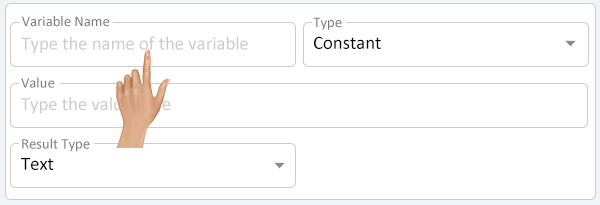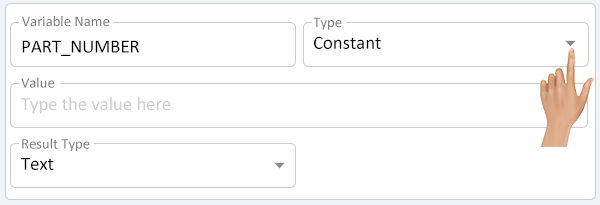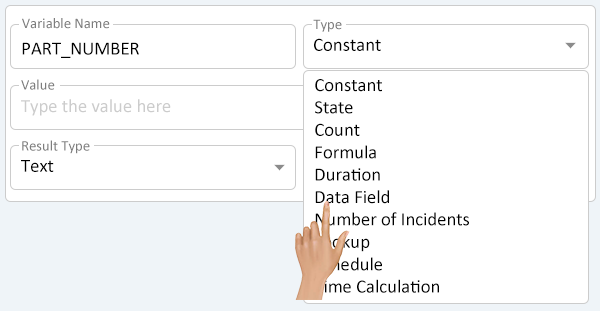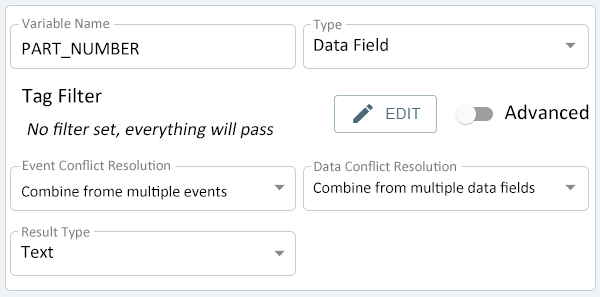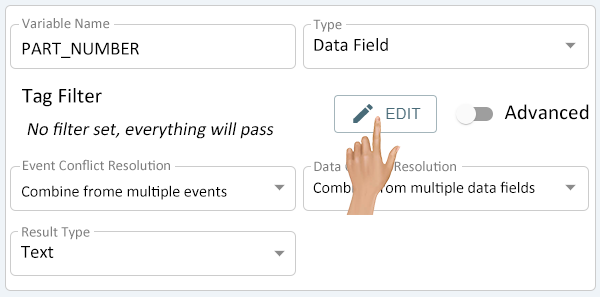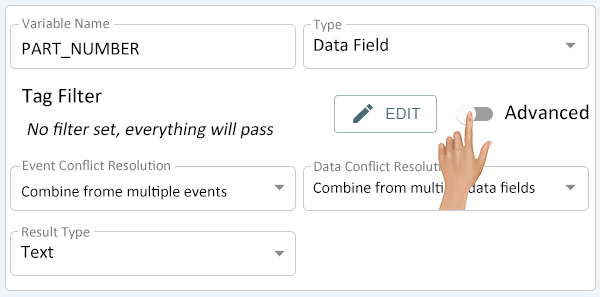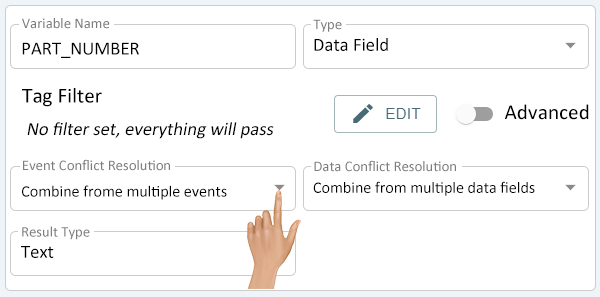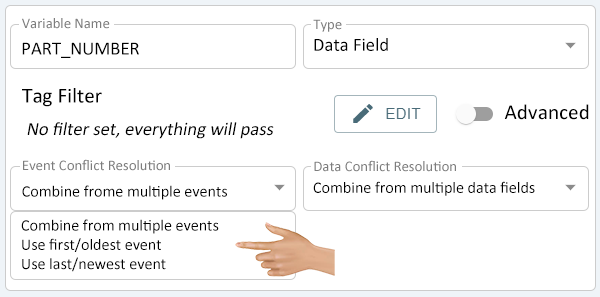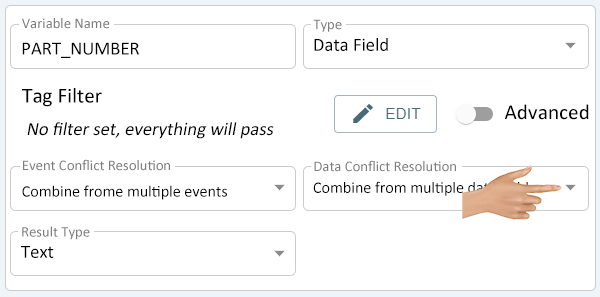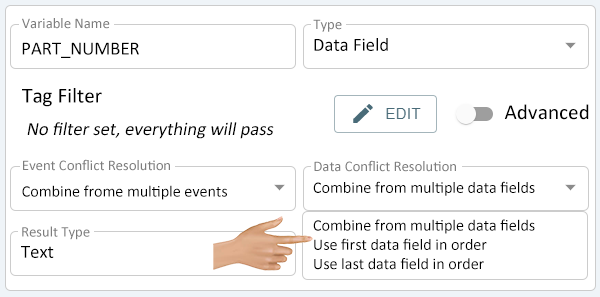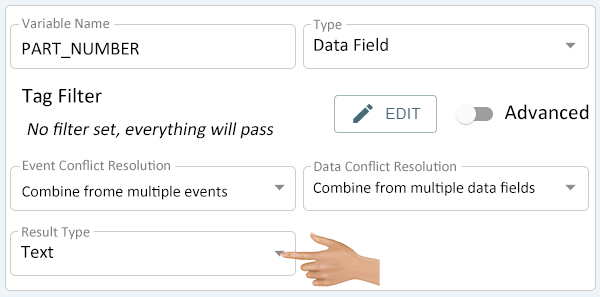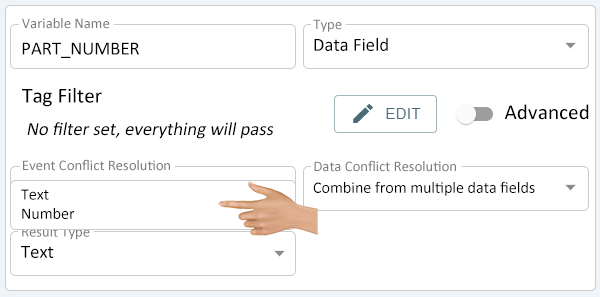Variables - Data Field
From VersaVision Support
Variables can be setup on Widgets or Dashboards. Each Variable has a specific purpose or data it gathers.
This page is dedicated to the Data Field Variable which allows the user to generate specific data field(s) for a Dashboard or Widget.
An example of Data Field Variable would be getting the part number that was entered at a location.
This page explain how to setup a Data Field Variable.
With a new or existing widget or dashboard opened, click on the Variables button at the top-right position above the layout.
On the Variables window click on the Add New button.
Each New Variable will have 4 property fields available. Depending on the Type selected, these fields may change. Select the Variable Name field.
Enter a Name for the Variable being created. Ensure the name is recognizable for use in creating the Dashboard or Widget cell.
- NOTE - a name must be uppercase letters or numbers. When a space is required, the user must use and underscore "_"
After entering a Variable Name, select the down arrow in the Type field.
Select Data Field from the list.
The Variable Properties will change to show the following fields.
- Tag Filter - this is where the user will define what location(s) and monitoring point(s) will be used for the Variable.
- Event Conflict Resolution - this is where the user will define how the result is calculated when there are instances of the event/monitoring point.
- Data Conflict Resolution - this is where the user will define how the result of the Data Field is presented when there are multiple entries.
- Result Type - this is where the user will define how the result of the Data Field is presented on the Dashboard or Widget.
To setup a filter for the Variable, click on the Edit button.
Click Here for instructions on setting up a Tag Filter.
To setup an Advanced Tag Filter, click on the Toggle to enable it.
Click Here for instructions on setting up an Advanced Tag Filter.
Click on the down arrow in the Event Conflict Resolution field.
There will be 3 options available - select the best option for the Variable being created.
- Combine from multiple events - this option will return every instance where the Tag Filter exists.
- Use first/oldest event - this option will return the first instance where the Tag Filter exists. Generally, the first instance is the oldest instance.
- Use last/newest event - this option will return the last instance where the Tag Filter exists. Generally, that last instance is the newest instance.
Click on the down arrow in the Data Conflict Resolution field.
There will be 3 options available - select the best option for the Variable being created.
- Combine from multiple data fields - this option will return all data fields that pass through the Event Conflict Resolution filter.
- Use first data field in order - this option will return the first data field that passes through the Event Conflict Resolution filter.
- Use last data field in order - this option will return the last data field that passes through the Event Conflict Resolution filter.
Click on the down arrow in the Result Type field.
There will be 2 options available - select the best option for the Variable being created.
- Text - this option will return all characters entered into the data field(s).
- Number - this option will only return integers/numbers that are entered into the data field(s).
- When Number is selected there will be a Decimal Places field. Select the number of decimal places required from 0 to 3.

|



